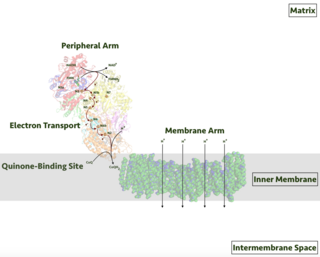| Nitrate reductase (NAD(P)H) | |||||||||
|---|---|---|---|---|---|---|---|---|---|
| Identifiers | |||||||||
| EC no. | 1.7.1.2 | ||||||||
| CAS no. | 9029-27-0 | ||||||||
| Databases | |||||||||
| IntEnz | IntEnz view | ||||||||
| BRENDA | BRENDA entry | ||||||||
| ExPASy | NiceZyme view | ||||||||
| KEGG | KEGG entry | ||||||||
| MetaCyc | metabolic pathway | ||||||||
| PRIAM | profile | ||||||||
| PDB structures | RCSB PDB PDBe PDBsum | ||||||||
| |||||||||
Nitrate reductase (NAD(P)H) (EC 1.7.1.2, assimilatory nitrate reductase, assimilatory NAD(P)H-nitrate reductase, NAD(P)H bispecific nitrate reductase, nitrate reductase (reduced nicotinamide adenine dinucleotide (phosphate)), nitrate reductase NAD(P)H, NAD(P)H-nitrate reductase, nitrate reductase [NAD(P)H2], NAD(P)H2:nitrate oxidoreductase) is an enzyme with systematic name nitrite:NAD(P)+ oxidoreductase. [1] [2] [3] [4] This enzyme catalises the following chemical reaction
- nitrite + NAD(P)+ + H2O nitrate + NAD(P)H + H+
Nitrate reductase is an iron-sulfur molybdenum flavoprotein.






